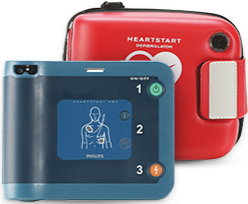It is a procedure, which requires an Automated Defibrillator machine, which attempts to re-organize the usual rhythm of the heart of the patient and it is vital in the first few minutes of the time of sudden onset of cardiac arrest in order to increase the chance of survival of the victim.
The definition of “sudden cardiac arrest”

It is an emergency cardiac situation where the heart cannot successfully pump out sufficient blood to the physical system of a patient. And it mostly occurs out of the blue, unexpectedly, hence the name.
Every year, sudden cardiac arrest strikes millions of victims worldwide. It’s unfortunate enough that a very small percentage (only 5% more or less) of the victims survive, due to the fact that the most required help fail to reach to them within the first 5 minutes, which is the most crucial timeframe in case of sudden cardiac arrest. If we take the global average of ambulance reach time, it’s more than 15 minutes. Even in countries like USA, UK, Australia, etc., it’s no less than 9 minutes. And, by then it’s well over the crucial time and in 95% of cases, the patient is already dead. Here a fact must be mentioned, that sudden cardiac arrest, or SCA, can occur to any person – it’s not gender, age or races specific. There is no convincing data that can prove otherwise.
Benefits of performing defibrillation during an SCA
Unless defibrillation procedure performed, the survival chance and rate declined by the rate of 10% with every passing minute, as per the American Heart Association. And if the patient receives that invaluable electric shock from a defibrillator machine within the 1st minute, he/she will have a 90% chance of survival – yes, it’s such crucial.
How a rescuer would know it’s an ideal situation to use a defibrillator?
Great question! The good news is, there is no need for a rescuer to know or identify whether it’s an ideal case of defibrillation or not. That’s the unique feature of an automated defibrillator. The device itself does the identification of the victim’s condition, once the pads are placed at the appropriate areas of the victim’s bare chest. Appropriate areas, where the pads should be placed, are shown clearly on the device itself by clear drawing. Once the pads are placed, the device starts its job and starts giving verbal instruction to the rescuer. And the rescuer should just follow the instruction – and that’s all. The device has a big button with the bolt sign in it for the rescuer to clearly understands where to press. If the device detects an arrhythmia which is an appropriate case of using a defibrillator device, the device would instruct the rescuer to press the bolt-button (while the rescuer must not touch the victim’s body in order to avoid getting shocked). Once the button pressed, the job is done. Then the device would instruct the rescuer to perform CPR (if applicable).
Having said that, if a victim is breathing, no matter if they can respond or not to any verbal or physical communication, a defibrillation procedure is not necessary. But, sometimes it’s not easy to detect for a rescuer who is panicked and tensed due to the sudden situation, hence it’s better to use a defibrillator device if available and let it do its job. It’s more than 99% accurate to identify if a defibrillation procedure is required or not.




